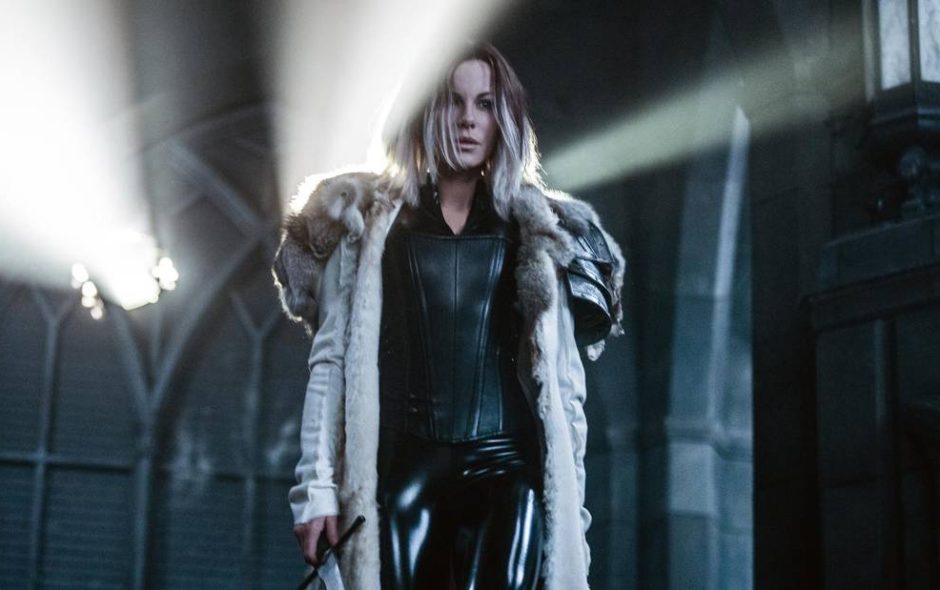Underworld and Resident Evil are supposedly mindless films, but there might be some progressive, feminist filmmaking amidst the vampires and zombies
Furiosa. Katniss. Foxy Brown. Cinema isn’t exactly devoid of action-movie heroines, but the pickings have been historically slim, and often problematic. For every Ripley, there’s a come-hither Catwoman. Outside of a few notable exceptions, such as Pam Grier and Michelle Rodriguez, few action heroines are women of colour, and rarely are they protagonists. Even more infrequent are action-heroine movies written and/or directed by women.
Which leaves most ass-kicking women as nothing more than ciphers – sexualized plot devices left to act as motivation for the male heroes, when not delivering blows in heels, as if that’s a real thing.
That was a criticism made against Charlize Theron’s Furiosa when Mad Max: Fury Road came out in 2015, triggering a slew of think pieces that either announced or denounced the movie as a feminist masterpiece. Two of the longest-running current movie franchises featuring action heroines are rarely talked about with that much fervour, though: Underworld, starring Kate Beckinsale as vampire warrior Selene, and Resident Evil, starring Milla Jovovich as zombie-killer Alice. Both are arguably feminist characters. But no one seems to care.
In case you’re unfamiliar with Underworld, whose next chapter comes out this weekend, it’s a vampires-versus-werewolves series that is surprisingly worse than Twilight. It focuses on Selene, a strident blood-sucker who defies the pecking order of her coven to unravel a conspiracy headed by a sinister patriarch. Over time, the Underworld series developed a few female characters who weren’t necessarily killed off or used as sex symbols, but the focus of the series is mostly on Selene as the lone heroine. (The franchise’s werewolves, a.k.a. the Lycans, have almost no female members, presumably because the idea of hairy women is too scary for movie executives.)
In the first two films, the sole friend Selene made is a guy she rescues named Michael, but then he becomes a hybrid of the two species and … sorry, I didn’t mean to put you to sleep. It’s a bad movie, and the subsequent films are even worse. Not much changes in this basic feminist formula throughout the series, though. Every film featuring Selene has her fighting the patriarchy in one form or another – if only it weren’t centred on a character constantly clad in a vinyl catsuit. Resident Evil is more complicated. Unlike Underworld, Resident Evil is teeming with female characters, both good and evil. The story, such as it is, revolves around a zombie virus that has overtaken the world. In each film (the sixth, Resident Evil: The Final Chapter, opens at the end of the month), Alice must fight against Umbrella, the faceless corporation that created the virus, to get back her freedom in one enclosed facility after another, often saving her friends, too – or perhaps her foes. (The series constantly switches between having characters be good or evil, or back to good again, either because they’re brainwashed, a good clone, an evil clone, or some other sci-fi hack.) Paying homage to the Lewis Carroll classic, Resident Evil also features as its ultimate villain an artificial intelligence called the Red Queen, voiced by a chilly British girl.
But where the Underworld series wants to have its feminism exist alongside its mindless sex objects, the Resident Evil series has, at the very least, inspired some film scholars to argue for its legitimate feminist underpinnings. Female friendship is a large component of the films, while Alice’s use of silence as a power and survival strategy is the subject of entire essays. Others, meanwhile, have noted the sexualized nature of Jovovich’s outfits throughout the series (most of whose entries have been directed by Jovovich’s husband, Paul W.S. Anderson). But in the more public sphere of cultural journalism, we rarely encounter such debates, and Underworld is ignored almost entirely. Why do so many mainstream critics care about Furiosa and Ripley, and not give an iota of notice to Selene and Alice?
The fact that the latter two roles appear to be more cipher-ish can’t entirely explain it. Is it that the characters are not just empty, but forgettable? Adding to that problem is the franchises’ lack of critical esteem. The highest Rotten Tomato Scores either series have received were for their initial movies: Resident Evil (2002) with 34 per cent “fresh” reviews and Underworld (2003) with an even more paltry 31 per cent. Yet they continue to proliferate new films, likely because they still earn enough profit to justify their relatively low production costs, at least compared to more male-oriented blockbusters.
Underworld and Resident Evil are supposedly mindless films, but does that mean their portrayals of women deserve any less attention? In a way, their mediocrity actually make the movies more feminist. Why must we always focus our attention on representation in quality or prestige pictures, or franchises with legion fandoms like the Marvel Cinematic Universe? It would be a mistake to think that feminism only belongs in “important movies.” To be truly progressive, feminism should surpass aesthetic quality and cultural significance.
Critically appraised movies like Alien and Mad Max: Fury Road only come along once in a while. And the umpteenth think piece about Wonder Woman has already been written, well before the film has even come out. Just because we must lower our aesthetic expectations when we watch a movie like Underworld doesn’t mean we should lower our expectations of its portrayal of women, or ignore it entirely. Selene is by no means an engaging character, but at least she’s fighting against the patriarchy. That’s worth talking about – even if it means discussing vampires and zombie killers in earnest.
Originally published in The Globe and Mail (January 5, 2017).

